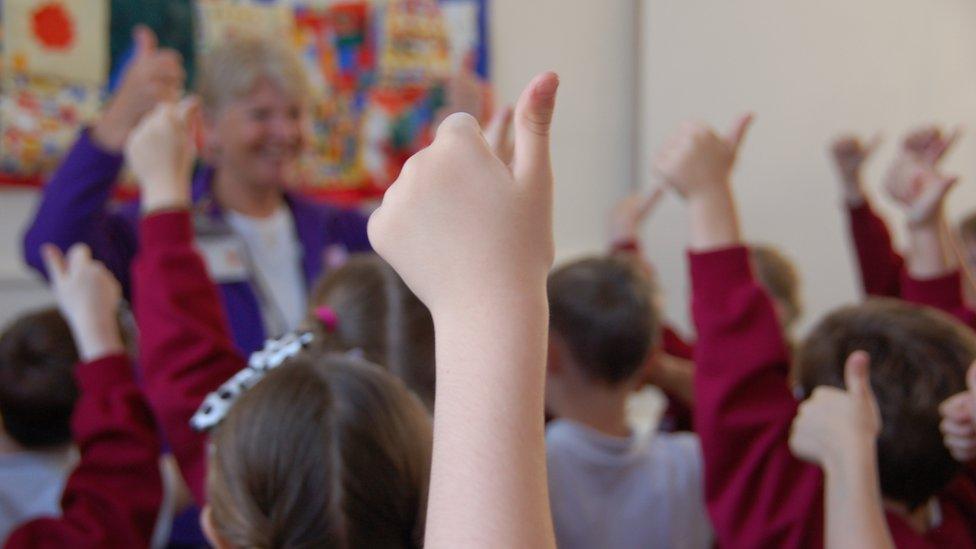Drop 'misleading' school statistic, government told
- Published

The government makes frequent use of a statistic showing a substantial rise in pupil numbers at good or outstanding schools
The government should drop a "misleading" statistic that suggests up to 1.9 million more pupils in England attend good or outstanding schools than in 2010, a former minister says.
The government says the increase is due to its reforms.
But former schools minister David Laws, says it "is simply impossible for this statistic to bear the weight that ministers want to place on it".
The Department for Education dismissed criticism of its use of the figure.
Liberal Democrat Mr Laws was schools minister in the coalition government from 2012 until 2015, when he lost his parliamentary seat.
He is now executive chairman of the Education Policy Institute think tank.
Research by the EPI reveals at least 40 mentions of the statistic by the government "spread across two prime ministers, four secretaries of state for education and numerous ministers".
It also appears frequently in news stories.
In November 2016, current schools minister Nick Gibb spoke of 1.8 million more pupils in good or outstanding schools than in August 2010
A Department for Education spokeswoman mentioned it the following month
And in March this year a spokeswoman used the figure 1.9 million
But closer analysis identifies several factors which "undermine" the statistic's "status as a fair comparison", says the think tank,
In particular, the authors say, more than a quarter of the rise in pupils attending good or outstanding schools is accounted for by an absolute increase in pupil numbers and shifts in the schools which pupils attend.
This accounts for 578,000 of the increase, says the EPI.
"That is not to say we should write all of this off from the total.
"The Department for Education would rightly point out that it intended for higher performing schools to expand."
David Laws was an education minister until 2015
In addition, the paper says, some 579,000 pupils attend schools rated good or outstanding but which have not been inspected since at least 2010.
Among these are 309,000 pupils at schools which converted to academies and have never have been inspected in their current form.
Again, the report acknowledges: "That is not to say that we should exclude these pupils from totals of those attending good or outstanding schools.
"If they had been inspected more recently they may well have achieved the same outcome."
The authors also suggest that changing the old Ofsted "satisfactory" grade to "requires improvement", which was seen as punitive, may have led to some inspectors awarding the "good" grade more readily.
Mr Laws said: "When you take into account rising pupil numbers, the large quantity of schools not inspected for many years, and the possible impact of a new Ofsted grading system, it is simply impossible for this statistic to bear the weight that ministers want to place on it.
"It would be better if the government stopped using this statistic, which misrepresents the level of improvement in school standards, and risks generating complacency about the education challenges the country faces."
Labour's shadow education secretary, Angela Rayner, agreed ministers should "abandon this misleading sound bite."
"Their structural reforms have so far had virtually no impact on overall attainment. And they should be honest with parents across the country instead of trying to pull the wool over their eyes."
She said the next Labour government's National Education Service would create a good school place for every child.
But a Department for Education spokeswoman said: "The facts are clear. The vast majority of pupils are in good or outstanding schools across the country, 1.9m more than in 2010, and an increase from 66% to 86% over that time.
"Academic standards continue to rise, with more pupils reaching the expected standard in maths at the end of primary school and 154,000 more six year olds on track to become fluent readers since the phonics check was introduced in 2012."